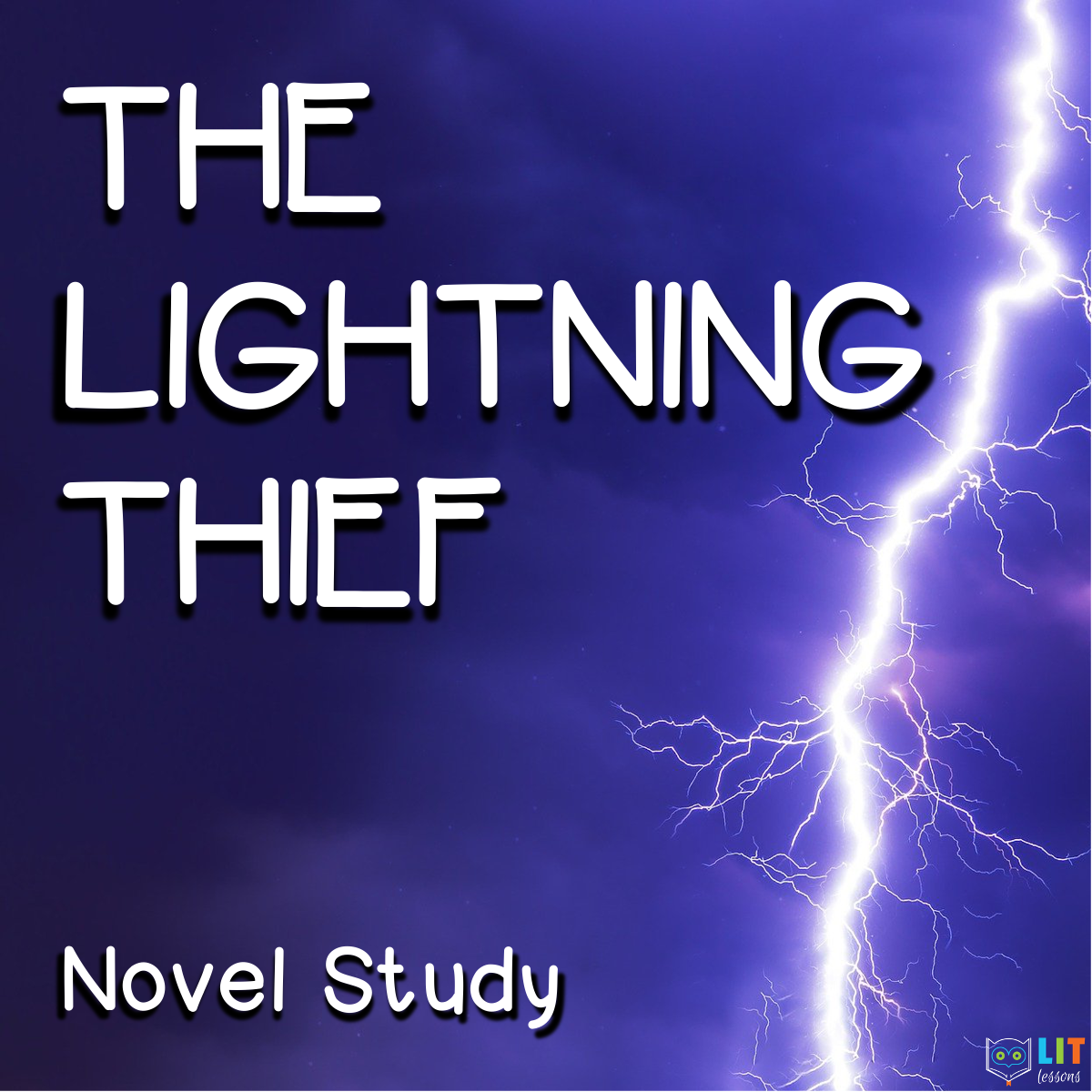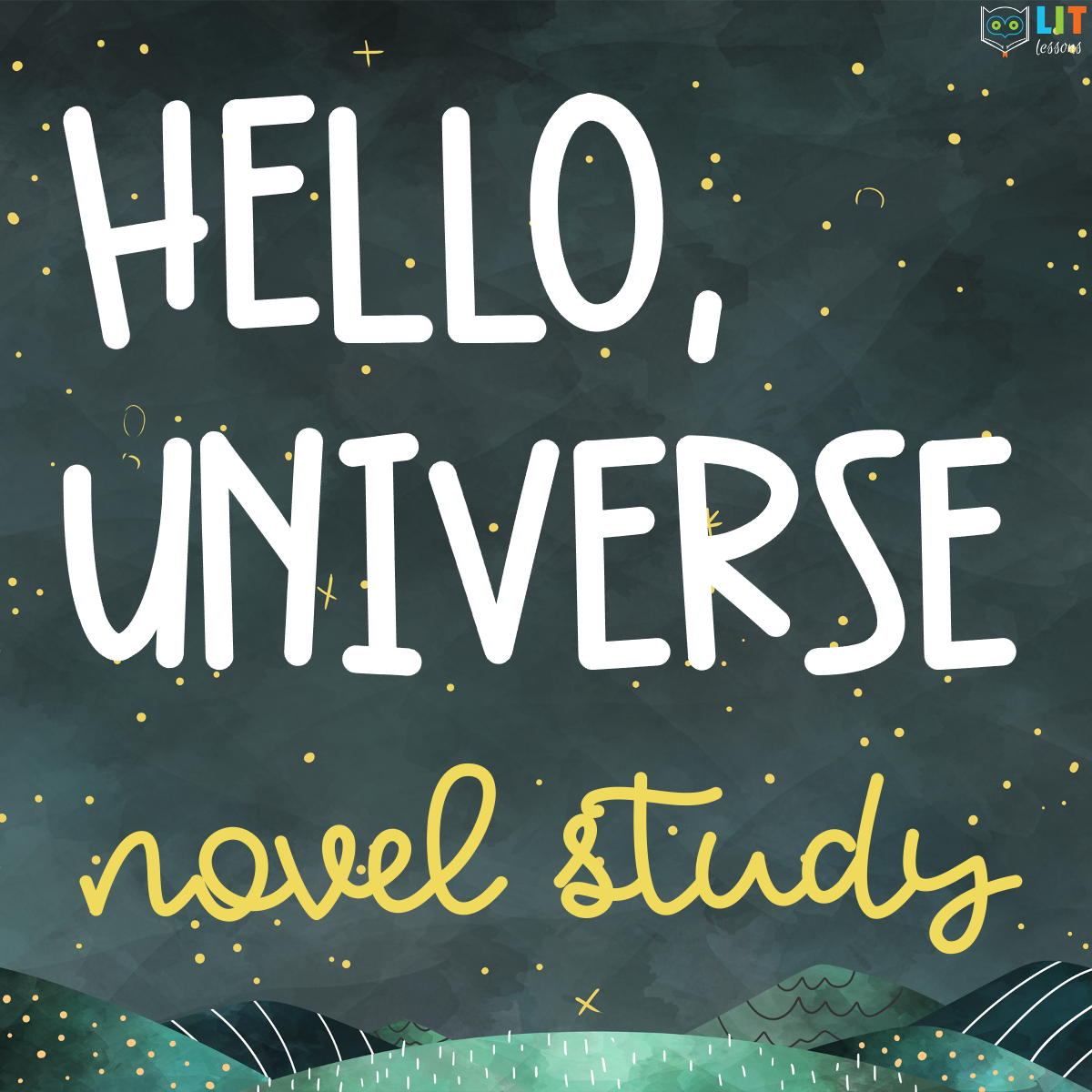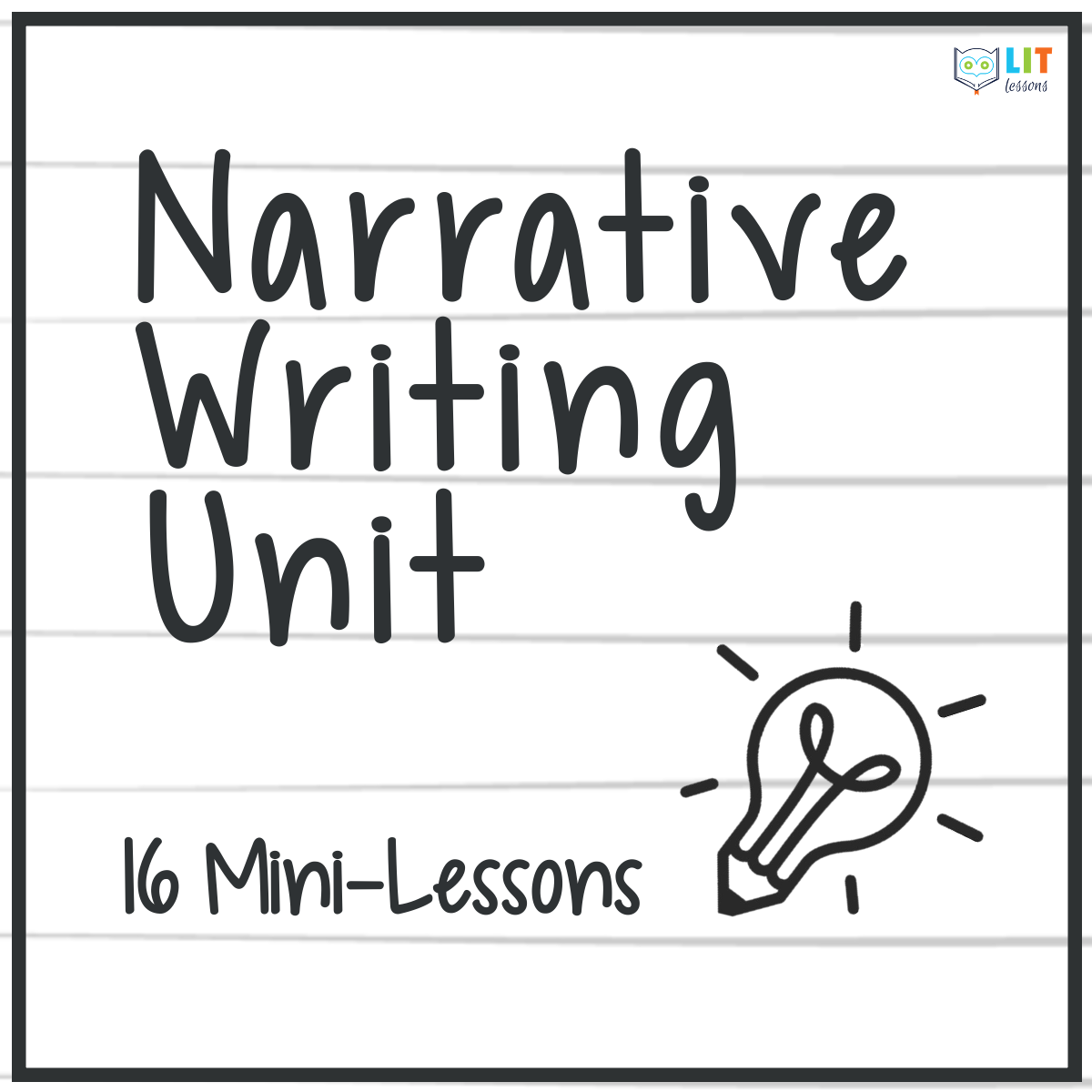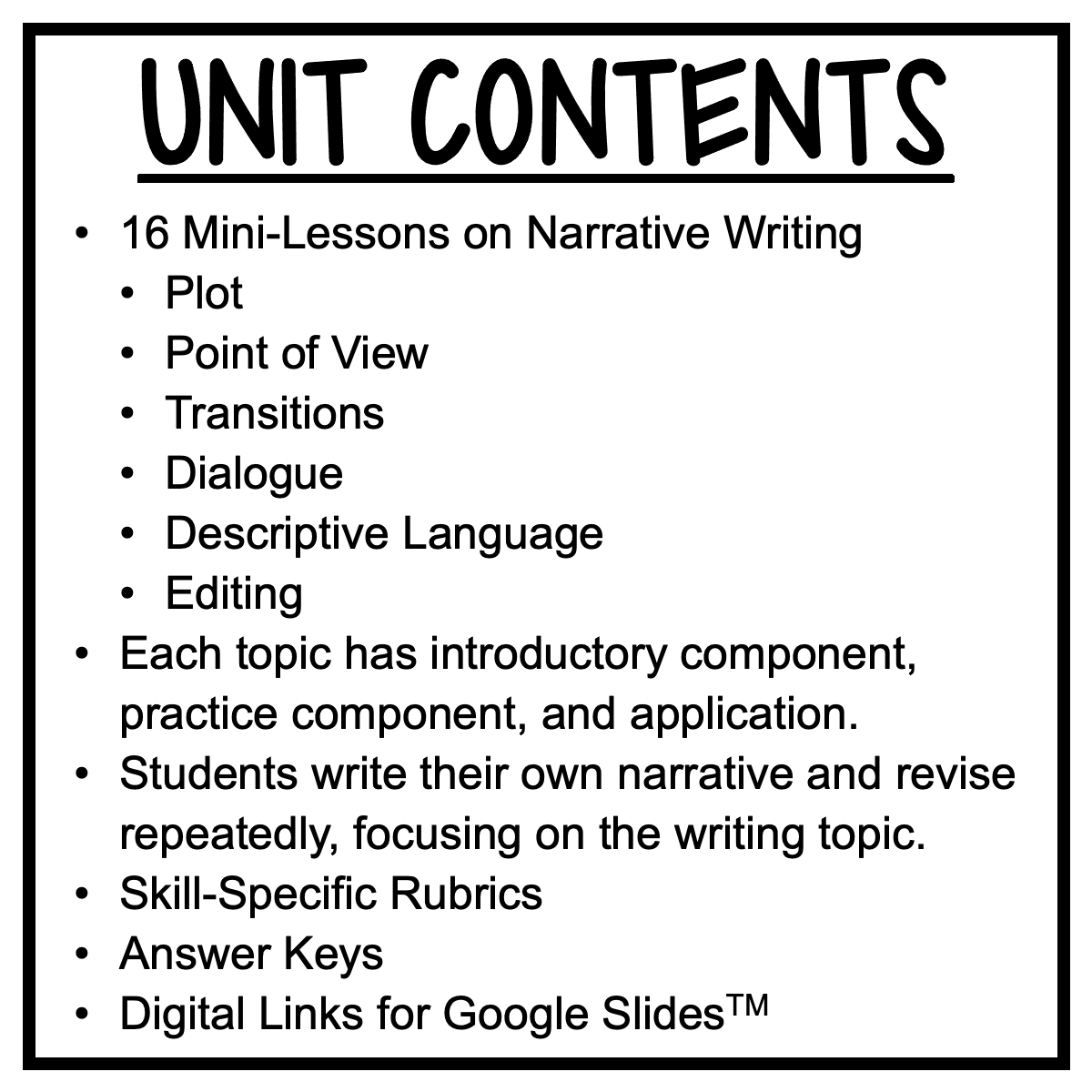Narrative Writing Lessons for Grades 6-8
You can only add to a wishlist if you have an account, please register now.
Create an Account$5
Narrative Writing – Snapshot of Included Resources:
- 16 Mini-Lessons on Narrative Writing
- Plot
- Point of View
- Transitions
- Dialogue
- Descriptive Language
- Editing
- Each topic has introductory component, practice component, and application.
- Students write their own narrative and revise repeatedly, focusing on the writing topic.
- Skill-Specific Rubrics
- Answer Keys
- Digital Links for Google Slides™
- ZIP file (PDFs and Word Docs for Digital Links)
- Non-Editable
- 2.99 MB
- 75 Pages
- Links for Student Pages in Google Slides™ & Google Forms™
- This downloadable resource supplies one single-teacher license for use in your classroom.
- Photocopying of this product is allowed only for the classroom use of the purchaser.
- Replication of this product, in whole or in part, for commercial sale or broader distribution is strictly prohibited.
- This product also may NOT be shared electronically, digitally, or otherwise in a manner that violates the Terms of Use detailed by LIT Lessons.
- For explicit information on permissions, please see the Terms of Use document included with this resource. Thank you for your cooperation and understanding.
Narrative Writing – Snapshot of Included Resources:
- 16 Mini-Lessons on Narrative Writing
- Plot
- Point of View
- Transitions
- Dialogue
- Descriptive Language
- Editing
- Each topic has introductory component, practice component, and application.
- Students write their own narrative and revise repeatedly, focusing on the writing topic.
- Skill-Specific Rubrics
- Answer Keys
- Digital Links for Google Slides™
- ZIP file (PDFs and Word Docs for Digital Links)
- Non-Editable
- 2.99 MB
- 75 Pages
- Links for Student Pages in Google Slides™ & Google Forms™
- This downloadable resource supplies one single-teacher license for use in your classroom.
- Photocopying of this product is allowed only for the classroom use of the purchaser.
- Replication of this product, in whole or in part, for commercial sale or broader distribution is strictly prohibited.
- This product also may NOT be shared electronically, digitally, or otherwise in a manner that violates the Terms of Use detailed by LIT Lessons.
- For explicit information on permissions, please see the Terms of Use document included with this resource. Thank you for your cooperation and understanding.



Also Included in the Following...
The Lightning Thief Novel Study
The Lightning Thief Novel Study is a comprehensive set of standards-aligned instructional materials for teaching The Lightning Thief by Rick Riordan. With over 100+ materials, students will deeply engage with the novel and develop their literacy skills. The fiction close reading activities, the literary analysis resources, nonfiction readings, writing activities, vocabulary, assessments, and projects all provide opportunities for your students to practice and apply what will be their growing understanding of the novel. They also provide numerous ways for you to DIFFERENTIATE learning for your students, allowing you to choose the assignments that best support your students’ learning while being conducive to any classroom model.
Hello, Universe Novel Study
The Hello, Universe Novel Study is a comprehensive set of standards-aligned instructional materials for teaching Hello, Universe by Erin Entrada Kelly. With over 100+ materials, students will deeply engage with the novel and develop their literacy skills. The close reading activities, literary analysis resources, astronomy nonfiction readings and activities, vocabulary, assessments, and final project all provide opportunities for your students to practice and apply what will be their growing understanding of the novel. They also provide numerous ways for you to DIFFERENTIATE learning for your students, allowing you to choose the assignments that best support your students’ learning while being conducive to any classroom model.

The Lightning Thief Novel Study
The Lightning Thief Novel Study is a comprehensive set of standards-aligned instructional materials for teaching The Lightning Thief by Rick Riordan. With over 100+ materials, students will deeply engage with the novel and develop their literacy skills. The fiction close reading activities, the literary analysis resources, nonfiction readings, writing activities, vocabulary, assessments, and projects all provide opportunities for your students to practice and apply what will be their growing understanding of the novel. They also provide numerous ways for you to DIFFERENTIATE learning for your students, allowing you to choose the assignments that best support your students’ learning while being conducive to any classroom model.

Hello, Universe Novel Study
The Hello, Universe Novel Study is a comprehensive set of standards-aligned instructional materials for teaching Hello, Universe by Erin Entrada Kelly. With over 100+ materials, students will deeply engage with the novel and develop their literacy skills. The close reading activities, literary analysis resources, astronomy nonfiction readings and activities, vocabulary, assessments, and final project all provide opportunities for your students to practice and apply what will be their growing understanding of the novel. They also provide numerous ways for you to DIFFERENTIATE learning for your students, allowing you to choose the assignments that best support your students’ learning while being conducive to any classroom model.








